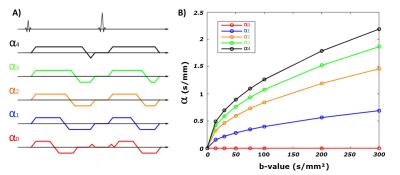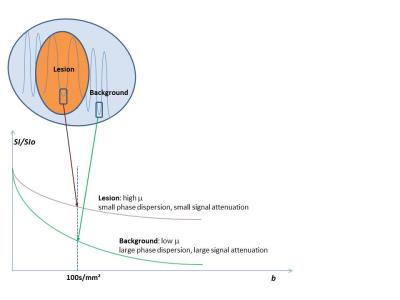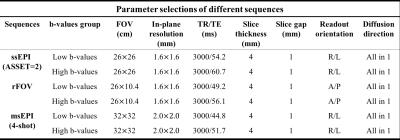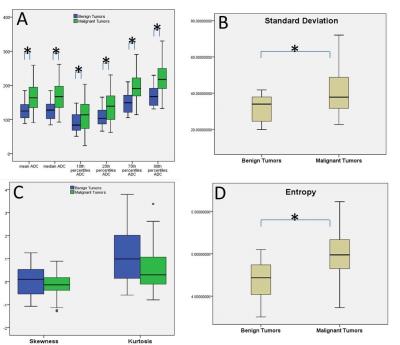|
Combined Educational & Scientific Session
ORGANIZERS: Kathryn Fowler, M.D., Kartik Jhaveri, M.D., F.R.C.P.C. & Lorenzo Mannelli, M.D., Ph.D.
Thursday, 27 April 2017
| Room 316BC |
13:00 - 15:00 |
Moderators: Hersh Chandarana, Giuseppe Palma |
Slack Channel: #s_body
Session Number: CE03
Overview
The speakers and presenters will discuss the current clinical applications and ongoing clinical research on diffusion weighted imaging (DWI) of the liver, kidneys and prostate. This session aims to provide knowledge to be readily applicable to clinical practice and to optimize research strategies on DWI in the body.
Target Audience
Clinicians, scientists, clinical scientists, as well as trainees are the target audience for this sessions.
Educational Objectives
As a result of attending this course, participants should be able to:
-Optimize imaging protocols for liver, renal and prostate imaging;
-Optimize DWI sequences in clinical practice;
-Optimize use of DWI in clinical practice;
-Recognize the trends in DWI research in liver, kidneys, and prostate; and
-Apply research to clinical practice.
13:00
|
|
Liver DWI 
Satoshi Goshima
N.A.
|
13:20
 |
1192.
 |
Efficient IVIM of the Liver using Convex Optimized Diffusion Encoding Waveforms With Variable Flow Encoding Strengths 
KÚvin Moulin, Eric Aliotta, Daniel Ennis
Accounting for the flow encoding strength α in addition to the b-value in the Intra-Voxel Incoherent Motion (IVIM) technique enables robust perfusion estimation. However, this approach still requires long scan times and α is dependent on both the diffusion encoding waveform and the b-value. In this study, waveforms were generated using the convex diffusion encoding (CODE) framework and led to a range of α for a given b-value. By sampling of flow- and diffusion-encoding space, capillary blood velocity (Vb), perfusion fraction (f) and true diffusion (D) was estimated with higher precision without any cost in time compared to conventional IVIM.
|
13:32
|
1193.
 |
IVIM virtual MR elastography of the liver - permission withheld
Denis Le Bihan, Shintaro Ichikawa, Utaroh Motosugi
We have investigated the potential of diffusion MRI to provide quantitative estimates of tissue stiffness and compared results with those obtained by standard MR elastography (MRE). We revealed that water diffusion, calculated from 2 key b values, can be directly and quantitatively converted into shear stiffness without using mechanical vibrations. Propagating shear waves can also be simulated leading to a new elasticity-driven IVIM attenuation contrast. Such virtual elastograms give a variety of contrasts by simulating various ranges of vibration frequencies and amplitudes or MRI gradient strengths not limited by MRE hardware capacities.
|
13:44
|
|
Prostate DWI 
Daniel Margolis
Diffusion-weighted imaging has gone from being a research tool to a correlate of cancer aggressiveness to a mainstay in routine prostate magnetic resonance imaging. From the basic components required for clinically useful imaging, to esoteric and technically demanding pulse sequences that tantalize us with the potential of obviating tissue diagnosis, diffusion-weighted imaging of the prostate runs the gamut from the mundane to the sublime.
|
14:04
|
1194.
 |
Gaussian and non-Gaussian diffusion models for Differential Diagnosis of Prostate Cancer with in bore Transrectal MR-Guided Biopsy as a Pathological Reference - permission withheld
Chunmei Li, Min Chen, Bing Wu
This study is to compare the utility of various metrics derived from different models based DWI and DKI in the differential diagnosis of prostate cancer. ADC, ADCslow, DDC, and MD values were significantly lower while MK value was significantly higher in prostate cancer lesions than those of prostatitis and BPH. Parameters derived from both Gaussian and non-Gaussian models could characterize prostate cancer. Diagnosis performance benefit was observed for DKI model as compared to MEM.
|
14:16
|
1195.
 |
In-vivo Reproducibility of Quantitative Diffusion MRI in the Prostate using Reduced Field-of-View and Multi-shot Acquisitions 
Yuxin Zhang, James Holmes, Arnaud Guidon, Shane Wells, Diego Hernando
Novel diffusion weighted MRI pulse sequences based on reduced FOV (rFOV) and multi-shot echo-planar imaging (msEPI), respectively, have been proposed to reduce distortions present in standard single-shot EPI. In this study, the quantitative reproducibility of prostate diffusion measurements with rFOV and msEPI is investigated with healthy volunteers. Diffusion parameters were estimated from different sequences (ssEPI, rFOV, msEPI), b-value groups, and diffusion models (mono-exponential, stretched exponential and kurtosis). Measurements from rFOV and msEPI are in good agreement with the standard ssEPI, demonstrating reproducibility across pulse sequences.
|
14:28
|
|
Renal DWI 
Harriet Th÷ny
|
14:48
|
1196.
 |
Subtype Differentiation of Small (< 4 cm) Solid Renal Mass Using Histogram Analysis of Reduced Field-of-View Diffusion Weighted MRI at 3-T 
Anqin Li, Zhen Li, Haojie Li, Daoyu Hu
To evaluate the utility of volumetric histogram analysis originated from reduced field-of-view (r-FOV) diffusion-weighted (DW) imaging for small (< 4cm) solid renal mass subtypes at 3-T MR. Differences of ADC histogram parameters among different subtypes of renal tumor were compared. Benign tumors had significantly lower mean ADC, median ADC, 10th, 25th, 75th, 90th percentiles ADC, SD and entropy values compared to malignant tumors. ADC histogram analysis of the entire lesion was complementary to the mean ADC measure and may have a certain value to help differentiate the majority of subtypes of small solid renal tumor.
|
|






